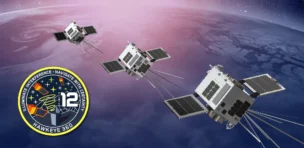Firefly’s successful Moon landing has caught the interest of space startups looking to build their businesses on the lunar surface, CEO Jason Kim said Tuesday.
“People have business models and revenues they need to generate,” Kim said, adding that he’s been getting “a lot of inquiries” from potential commercial customers after Blue Ghost’s flight. “They can depend on Firefly to take a pragmatic approach and stick the landing and get multiple days of surface operations.”
Blue Ghost’s first flight was funded by NASA’s Commercial Lunar Payload Services, or CLPS, program, but companies are already talking about heading to the Moon for everything from lunar mining to building power grids. Those industries could allow Firefly to ramp up its mission cadence to multiple lunar flights every year, Kim predicted.
The highlights: Kim’s comments came during a press conference with NASA during which both entities took a victory lap following the mission, which wrapped up this week when Blue Ghost entered the darkness and extreme cold that comes with lunar night.
During the 14+ day mission, Blue Ghost:
- Allowed NASA to collect data for longer than expected on all 10 of its science payloads
- Captured images of a lunar eclipse and a lunar sunset
- Made history, setting the record for the longest commercial mission on the Moon
The success could lead to a bigger payday for Firefly—Adam Schlesinger, the CLPS project manager at NASA Johnson, said the contract includes several options tied to additional money if certain milestones are met, and while the teams are still evaluating the end result, Blue Ghost appears to have checked a lot of boxes.
What’s next: NASA is looking to expand the success of the CLPS program throughout the solar system, including using commercial tech to send science payloads to Martian orbit and, eventually, the surface of the Red Planet, said Joel Kearns, NASA’s deputy associate administrator for exploration.
When that happens, expect Firefly to toss its hat in the ring.
“I don’t see anything that precludes us doing Moon missions and Mars missions,” Kim said.




